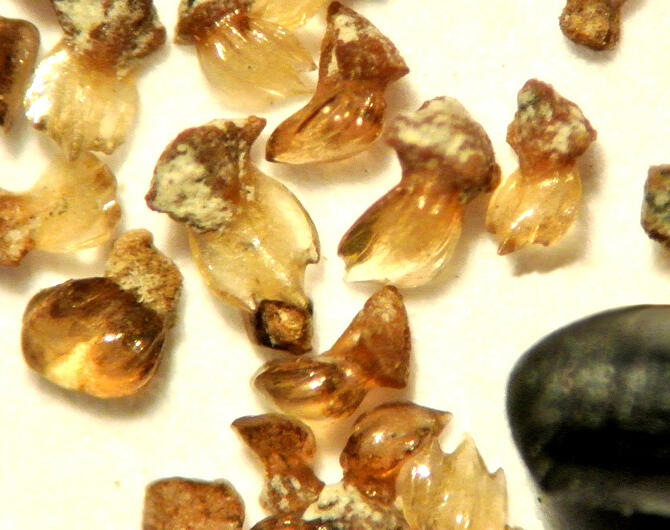Prehistoric Earth was home to many giant creatures, one of the most notable of which was the megatooth shark Megalodon (Otodus megalodon). Its fossils, mostly teeth (occasionally vertebrae), have been found in Neogene marine strata worldwide. Recent studies have estimated that Megalodon was at least 15 meters long, and its length even reached up to 18−20 meters in relatively cooler waters.
Geochemical analyses of bite marks and tooth fossils left on the bones of various marine mammals indicate that Megalodon was at the top of the food chain in the marine ecosystem at the time. However, much about the biology of this giant shark species remains unexplained.
A research team including Professor Kenshu Shimada of DePaul University in the United States of America, Curator Yuta Yamaoka of the Saitama Museum of Natural History, Professor Yukito Kurihara of the Faculty of Education at Mie University, and Curator Yuji Takakuwa (Chief of the Geological Research Section) of the Gunma Museum of Natural History has analyzed fossils of Megalodon scales (placoid scales) from a 10-million-year-old individual discovered in Fukaya City (formerly Kawamoto Town), Saitama Prefecture, in 1986, and revealed that this species was not necessarily a megatooth shark and was a slow swimmer. The results have been published in Historical Biology.

Provided by Saitama Museum of Natural History
The fossils of the Megalodon placoid scales have been on permanent display at the Saitama Museum of Natural History since July 12.
A mosaic of calcified cartilage fragments and 589 placoid scales were recovered after the decomposition of a small rock mass associated with the Megalodon tooth group fossils from the Tsuchishio Formation, which was stored at the Saitama Museum of Natural History.
The morphology and arrangement of the calcified cartilage tissues of Megalodon were almost identical to those of extant shark species, suggesting that the cartilage growth mechanism common to currently existing sharks was also at work in Megalodon.
The placoid scales of Megalodon could be classified into three types based on morphology and were between 0.3−0.8 mm in diameter. This value range is comparable to that of the placoid scales of extant pelagic sharks in the orders Lamniformes and Carcharhiniformes. This suggests that the extraordinary body size of Megalodon did not necessarily cause an enormous increase in the size of its placoid scales. Many of the Megalodon placoid scales had the three characteristic parallel small ridges. Even extant sharks have such ridges on their placoid scales, called denticles.
The skin surface of sharks is covered with a seamless coating of placoid scales with denticles that continuously form numerous fine grooves in the anterior-posterior direction of the body, which reduces surface frictional resistance during swimming.
In extant sharks of the orders Lamniformes and Carcharhiniformes, the distance between the denticles on the placoid scales (IKD : interkeel distance) of each species is known to be correlated to some extent with the swimming speed of the individual; that is, species that have higher swimming speeds tend to have smaller IKD values.
Therefore, based on the fact that the placoid scale fossils from the Tsuchishio Formation had an average IKD of 100 micrometers, the research group estimated the cruising speed of Megalodon to be approximately 2 kilometers per hour. Although this value is tentative because it is based on several assumptions and limitations, it is an important piece of evidence which indicates that Megalodon was not a fast swimmer. Therefore, the results obtained by this research group contradict the conclusions from several previous studies that Megalodon was a fast-swimming shark (4.8−5.1 km/h).
The research group believes that Megalodon usually swam slowly and only picked up speed when attacking prey. Megalodon likely evolved regional endothermy as a mechanism for maintaining its body temperature, which was thought to be one of the important factors for its enormous body size. Previous studies have attributed fast swimming as a factor, but the calculated swimming speed based on placoid scales in this study contradicts this theory.
Thus, a new hypothesis is that Megalodon may have used most of the metabolic heat produced by regional endothermy to promote both digestion of the large pieces of mammalian flesh on which it fed and subsequent nutrient absorption. If this hypothesis is correct, it suggests that the functional role of regional endothermy has changed significantly in importance in the evolution of Otodus sharks over time.
In other words, fast swimming was the main driving factor of regional endothermy in the 3-meter-long Cretalamna that existed in the Late Cretaceous period. In contrast, the evolutionary process that led to the gigantic body size of the Megalodon growing over 15 meters long changed regional endothermy to allow the digestion of large pieces of ingested meat in the internal organs and absorption of nutrients.
Shimada said, "Clarifying the biology of Megalodon, one of the largest carnivores that ever existed on Earth, is important for understanding the role of large carnivores in the evolution of marine ecosystems."
Yamaoka further elaborated, "This time, a major discovery was made from a sample that had been stored in the museum for more than 30 years. Conducting this research made me realize once again how important it is to carefully preserve and pass on museum materials."
Journal Information
Publication: Historical Biology
Title: Tessellated calcified cartilage and placoid scales of the Neogene megatooth shark, Otodus megalodon (Lamniformes: Otodontidae), offer new insights into its biology and the evolution of regional endothermy and gigantism in the otodontid clade
DOI: 10.1080/08912963.2023.2211597
This article has been translated by JST with permission from The Science News Ltd. (https://sci-news.co.jp/). Unauthorized reproduction of the article and photographs is prohibited.




